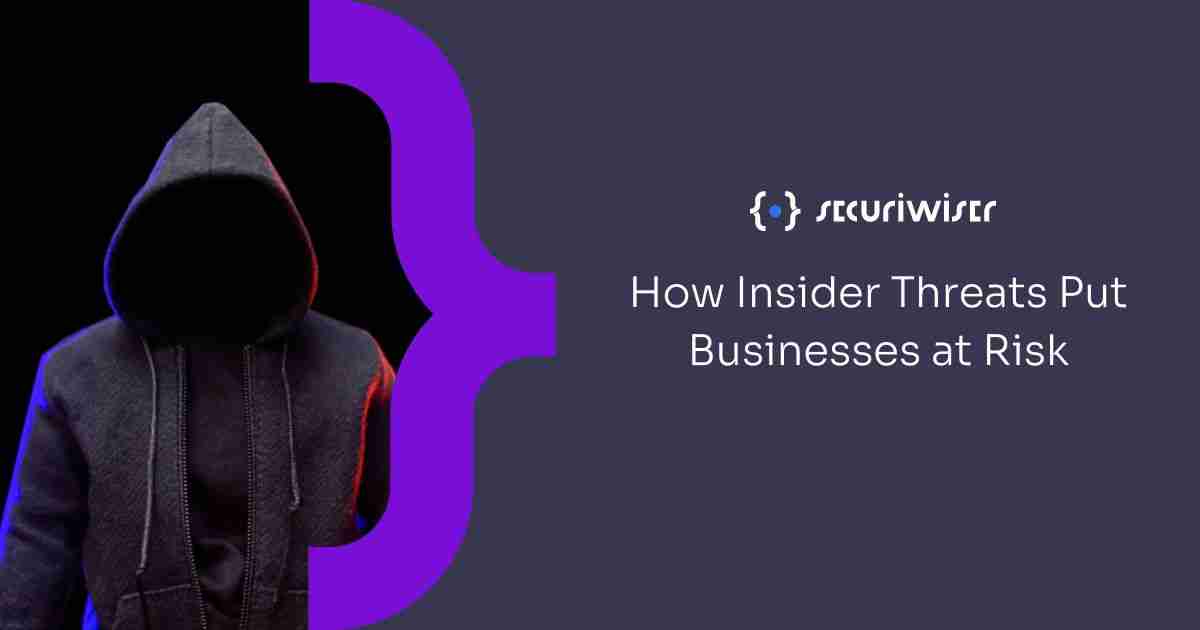How Insider Threats Put Businesses at Risk
Blog / How Insider Threats Put Businesses at Risk
3 MIN READ

Businesses spend a lot of time and effort protecting themselves from external threats. Stopping a hacker from getting in is the main goal of cybersecurity after all. With all the work put into preventing external attacks, some businesses neglect the largest cybersecurity risk right under their noses.
In fact, in a large number of cases, cyberattacks happen due to the actions of employees. This is an insider threat – a cyber threat that stems from inside a business’s network. These threats could be an employee gone rogue, slipping data to a hacker on the outside; or simply an employee downloading malware onto a company computer. In any case, employees have greater access to a business’s network and can easily cause more damage than a hacker on the outside.
The People Problem
The term ‘insider threat’ may give off the impression that the insider is a malicious actor. However, cyberattacks caused by insiders are rarely intentional. In most cases, the insider threat is an unknowing employee that has downloaded something they shouldn’t have on a work computer.
Employees falling victim to social engineering attacks is a tale as old as cybersecurity itself. Say an employee gets an email offering them a reward. They click the link in the email and download a program. The next thing you know, your business’s data has been stolen.
The largest insider threat to a business is negligent or ill-informed employees. This is because people are more easily manipulated than computers or hardware. Creating an ironclad defence against hackers on the outside is not always enough. All it takes is one employee with network privilege falling for an email scam and the defence comes crashing down.
Social engineering attacks like phishing are effective because employees have privileges within a network. This means they are generally given more trust, allowing them to access parts of the network that a hacker has a hard time reaching. If the hacker can find a way onto an employee’s computer, they can do serious damage.
The Cause of Insider Threats
Insider threats are employees or third parties with access to the business network. Most insider threats are accidental, caused by one of two reasons – carelessness and lack of cybersecurity understanding. An employee forgetting about a certain cybersecurity policy can be seen as carelessness. An employee not knowing the cybersecurity policies in the first place is a lack of understanding. These two reasons are linked to one another. When employees are better educated on cybersecurity, they are more careful when dealing with cyber threats.
In rarer cases, insiders may be rogue agents within the business. Most of the time, these rogue agents aren’t masters of corporate espionage. Usually, they are just disgruntled employees seeking some kind of revenge for whatever reason.
Types of Insider Threats
As mentioned, most of the time insider threats are not intentional. Knowing the types of insider threats will help you know what to look out for. Here are some examples:
Careless Employee
Employees are one of the main risk factors in terms of insider threats. Sometimes employees just get complacent and forget cybersecurity policies. They may have sent data to their private cloud or clicked on phishing emails, for example.
Third Parties
Third parties that deal with your data include vendors, cloud storage providers and contractors. All of these businesses can fall victim to a cyberattack, and this may be out of your control. If a third party is careless with your data or suffers a cyberattack, it puts you at risk too.
Rogue Insiders
Much rarer than the other two examples, rogue agents can be the most damaging. Rogues with inside access can leak business information from the inside. These are usually disgruntled employees compromising your business for profit or revenge.
Insider Threat Prevention and Mitigation
Now you get the idea of the problems insider threats pose, you should know how to protect yourself. Here are some ways to prevent insider threats, and mitigate the risks:
Employee Education
We talked earlier about how employees with more cybersecurity savvy are less likely to be careless. This is why education may be the most important step to preventing insider threats. A well-informed employee is much less likely to fall victim to tricks from hackers and put your business at risk. They are likely to be more diligent in following cybersecurity policies.
Vetting Third Parties
Make use of a third-party risk management framework. By performing a background check on your associates, you can mitigate the risk of a third party insider threat.
Adopting a Zero Trust Approach
By using a zero-trust model, insiders won’t have direct access to sensitive data, no matter their privilege. Zero trust uses measures like multifactor authentication and strong password security to make sure lower-level employees don’t have access to important data. Zero trust models make it much harder for rogue insiders to access data.
How Securiwiser Can Help
If you are concerned about your organisation’s cybersecurity, Securiwiser is here to help. Securiwiser offers round-the-clock monitoring to help you find weaknesses in your defences.
Securiwiser’s goal is to help businesses better understand their cybersecurity. We will scan your organisation’s domain to look for cyber risks, and provide you with the information you need to solve any problems found. We provide a breakdown that is beginner-friendly, but also provide the information experts need to fix these issues.
Try out Securiwiser today for free by clicking the link here.
Previous Article
13 Digital Footprint Protection Steps You Should KnowHow secure is
your school?
Blog categories
How secure is
your school?